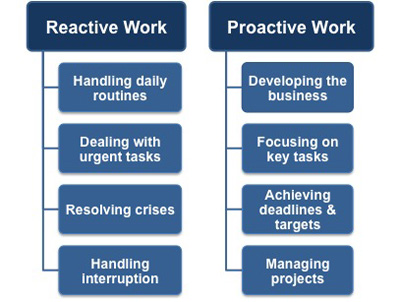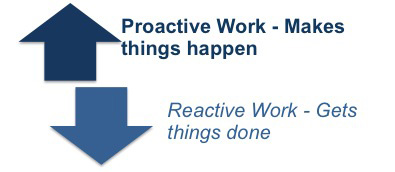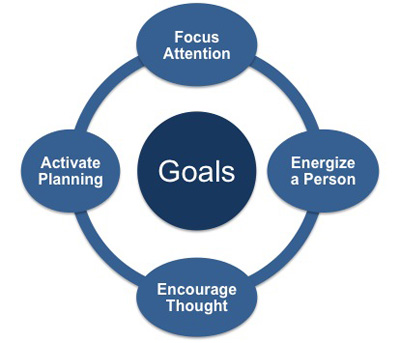Goal Setting for Managers
Many people begin their career in management with high hopes of making an impression on their bosses by developing the business or by implementing new and better ways of doing things. Unfortunately, most of them find that they are so busy handling day-to-day issues that there never seems to be time for anything else.
Furthermore, comparatively few people have tangible goals; most have the awareness that things could be improved but only vague ideas about how to achieve these improvements.
 |
All tasks are either reactive or proactive. Reactive tasks are when you react to situations that occur, and are driven by events and the actions of other people. Conversely, proactive tasks are when you seek opportunities to make a positive impact in the workplace and are driven by you.
To be an effective manager, it is far more beneficial in the long term to be proactive. Behaving proactively revolves around anticipating events and using initiative to predict the likely outcome, whilst being in a position to respond and take the appropriate action when needed.
 |
Those who gain recognition and promotion in organizations are usually those who are proactive; they are those who use their initiative to make things happen. In order to truly be proactive, however, there are two things that need to be addressed.
The first is that a certain amount of time needs to be freed up from handling routine tasks, resolving crises, and handling interruptions. You can discover how to do this for yourself by reading the other personal productivity eBooks on this website.
The second thing that you need to do is to be able to set goals that will inspire you and your team to make things happen. Setting goals that motivate people is not easy and requires effort and good judgment.
Many people confuse goal setting with wishful thinking and you can see examples of this in organizational and departmental mission statements that are usually so vague as to be virtually meaningless. Some examples, taken from Fortune 500 companies, include:
'To achieve profitable growth through superior customer service, innovation, quality and commitment.'
'To combine aggressive strategic marketing with quality products and services at competitive prices to provide the best value for consumers.'
'Be the best in the eyes of our customers, employees and shareholders.'
These mission statements are fairly typical and whilst there is nothing wrong with them per se, they seldom inspire anyone to do anything specific to help achieve them.
If a goal is to be motivational then it must have an objective that is clear and well specified in what should be achieved; it must identify exactly what needs to be done and in what timeframe. It must also define a clear outcome that is measurable and can be assessed.
There are three commonly used methods of setting goals. These are the 4CF Method, the SMART Method and the Backwards Goal Setting Method.
As well as setting goals for your team as a whole, you will usually be expected to set targets for each team member as part of their annual appraisal process. How successful you are in doing this will have a big influence on not only their productivity but also on how they perceive you as a manager.
If you set goals that are unambiguous and measurable then most people will rise to the challenge or at least strive to achieve them to the best of their ability. On the other hand, nothing destroys morale faster than not knowing what you're expected to achieve or how your efforts will be measured.
 |
As a manager, it is very time consuming to try to keep track of an employee's work and to motivate them on a continuous basis. Goals are, therefore, an important tool, since they function as a self-regulatory mechanism that provides each team member with clear objectives.
Goal setting can aid individual performance in four ways:
- Goals allow team members to be focused and committed to achieving the end result.
- Goals serve as an energizer; goals stimulate people to make an extra effort to achieve them.
- Goals encourage team members to use their initiative to make effective decisions with long-term impacts. This often results in more efficient and successful working practices that are driven from the bottom up rather than by management.
- Goals motivate employees to organize their time efficiently to maximize productivity.
Remember, the attainment of your own targets is highly dependent on your staff achieving the goals you have set them, so be careful to set goals that are constructive as well as productive.
You may also be interested in:
Goal Setting Theories of Locke and Latham | 4CF Goal Setting | SMART Goal Setting for Managers | Backwards Goal Setting | Prioritizing Personal Goals.
|
|
 |


